Parabens are a class of preservative agents that are commonly added to cosmetic, food and drug products to prevent microbial growth and extend product shelf life. While parabens are still regarded as safe when employed in small amounts, some studies have shown parabens to mimic the hormone estrogen, which spurs concerns about paraben toxicity among consumers. Subsequently, a growing community of consumers is taking a greater interest in products that are free of parabens. More shoppers are comparing product ingredient lists at the shelf and making purchase decisions based on the absence of parabens. Including a “Free-of” or “Does-not-contain” parabens claim on products formulated to omit parabens is an effective way to signal to consumers that products are of interest to them.
In the United States, products displaying a “Free-of” or “Does-not-contain” claim are subject to regulations as outlined in 16 CFR 260.9. In accordance with these guidelines, products displaying a free of parabens claim must be tested for paraben content before going to market.
What is involved in paraben-free testing?
To legally market a product as “free of parabens”, the product must not contain parabens or substances that are believed to pose the same or similar risks as parabens. In routine identification tests for parabens, seven commonly used parabens are assayed. This list of parabens is as follows: Methyl, Ethyl, Isopropyl, Propyl, Isobutylene, Butyl and Benzyl Paraben.
Meeting the detection requirements—as outlined in 16 CFR 260.9—requires testing methods with the highest degree of detection sensitivity. Furthermore, testing approaches should be fully validated, and followed up with cleaning validation assessments if the “Free-of” product is manufactured on production equipment which may also be used for paraben-containing products. Should a trace amount of paraben be found in a product to which it was not deliberately added, it may still be labeled as free of parabens. This is provided that the detected quantity is no more than a trace contaminant based on the nature of the substance(s) and the product, the presence of the substance(s) does not cause material harm, and the substance(s) has not been deliberately added to the product.
What types of parabens testing does CPT offer?
CPT Labs maintains a state-of-the-art analytical laboratory at the highest level of regulatory compliance and diagnostic accuracy. Our parabens testing features an in-house optimized identification test that utilizes ultra-performance liquid chromatography-mass spectrometry (UPLC-MS) to detect and confirm paraben concentrations down to 1 part-per-million (ppm).
Our analytical experts at CPT also provide support to help clients choose a testing scheme appropriate for their chosen “Free-of” claims. CPT offers support and testing services for product validation and cleaning validation assessments.
Why “Free-of Parabens” testing matters
Concerns surrounding the potential for paraben toxicity have spurred more consumers to become discerning shoppers. Paraben-free manufacturers who wish to catch the attention of this population of consumers may do so with a free of parabens claim that is supported by appropriate product testing. CPT Labs offers highly sensitive testing for parabens as well as analytical expertise to help our clients plan appropriate “Free-of” testing schemes and process cleaning validations.


